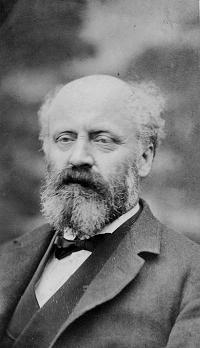James Wimshurst facts for kids
Quick facts for kids
James Wimshurst
|
|
|---|---|
 |
|
| Born | 13 April 1832 |
| Died | 3 January 1903 (aged 70) Clapham, England
|
| Occupation | Engineer |
| Parent(s) | Henry Wimshurst (father) |
| Engineering career | |
| Discipline | Shipwright, electrical engineer |
| Significant design | Wimshurst machine |
| Awards | Fellow of the Royal Society |
James Wimshurst (born April 13, 1832 – died January 3, 1903) was a clever English inventor and engineer. He was also a shipwright, which means he designed and built ships. Even though he didn't patent his inventions, he made big improvements to a machine that creates static electricity. This machine became so famous because of his work that it's now known as the Wimshurst machine.
Contents
A Life of Invention
Early Life and Career
James Wimshurst was born in 1832 in Poplar, a part of East London, England. His father, Henry Wimshurst, was also a shipbuilder. James studied in London and became an apprentice at the Thames Ironworks. This was a big company that built ships.
Later, James worked for the Liverpool Underwriters' Registry. In 1874, he joined the Board of Trade. Here, he became a chief surveyor for ships. This meant he checked how ships were built and made sure they were safe.
Experiments and Discoveries
Wimshurst loved to spend his free time experimenting. Besides his electrical work, he invented other useful things. He created a special vacuum pump. He also made a device to show how stable a ship was. He even found ways to connect lighthouses to the mainland using electricity.
Around 1878, he started playing with electrical machines. These machines could make sparks for science experiments or even for fun. By 1880, he became very interested in "influence machines." These devices generate static electricity. His home in Clapham, England, had a great workshop. It was full of tools and equipment for his electrical projects.
Wimshurst built many types of static electricity generators. He then made many changes to them. One of his improved machines was called the Holtz-Wimshurst machine.
Developing the Wimshurst Machine
Soon after, Wimshurst created his own "duplex machine." This machine had two spinning disks. These disks turned in opposite directions. Each disk had metal parts on its surface.
Compared to older machines, Wimshurst's new device worked better in different weather. It also didn't need an outside power source to start. Other inventors also improved his design.
In 1882, Wimshurst made a "Cylindrical Machine." By 1883, his improvements to static electricity generators were so good that his machine became widely known. It was simply called the Wimshurst machine. In 1885, one of the biggest Wimshurst machines was built in England. You can still see it today at the Chicago Museum of Science and Industry.
Later Achievements
Wimshurst became a member of the Institution of Electrical Engineers in 1889. In 1891, he showed off a machine that could make high-voltage alternating currents.
By 1896, his machines with multiple disks (some had up to 8 disks!) found a new important use. They were used to create Roentgen rays. These rays helped doctors see inside the body. This was a big step forward for medical science. Because of his work in medicine, he was chosen as a Fellow of the Royal Society in 1898. He passed away in Clapham, England, at the age of 70.
Memberships and Honors
James Wimshurst was recognized for his important contributions:
- Fellow of the Royal Society (1898)
- Institution of Electrical Engineers (1889)
- Physical Society
- Röntgen Society
- Institution of Naval Architects

